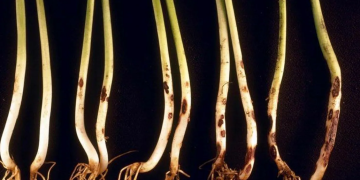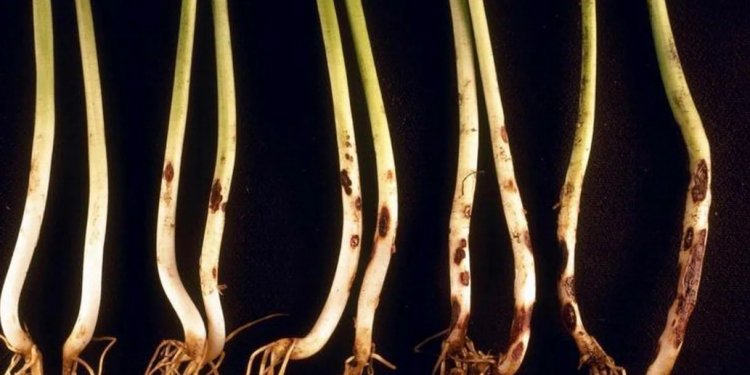#agriculture #fungalpathogen #wirstem #Rhizoctoniasolani #croprotation #certifiedseed #economiclosses #goodagriculturalpractices
Rhizoctonia solani, commonly known as wirestem, is a soil-borne fungal pathogen that affects various crops, including potatoes, soybeans, corn, and cotton. The disease occurs worldwide and is responsible for significant economic losses in agriculture. This article discusses the development and consequences of the wirestem disease and the measures that farmers can take to optimize their crop yield.
Development of Wirestem Disease
Wirestem disease develops in soil and can persist for several years, making it difficult to control. The fungus can survive in plant debris or soil and infects plants through roots or stem bases. The disease can occur at any stage of plant growth but is more common during the seedling stage. Symptoms of wirestem disease include brownish lesions on the stem, wilting, and stunted growth. Severely infected plants can result in death.
Consequences of Wirestem Disease
Wirestem disease can cause significant economic losses for farmers. The disease can result in reduced crop yields and quality, leading to decreased profitability. Additionally, the costs of controlling the disease can add up, including the cost of fungicides and labor for planting and re-planting crops.
Measures to Control Wirestem Disease
Farmers can take several measures to control wirestem disease. Crop rotation is one of the most effective measures. The disease cannot survive in soil for more than a year, so rotating crops can significantly reduce the incidence of the disease. Additionally, using certified seed that is free from the disease and implementing good agricultural practices, such as avoiding excessive moisture, can help prevent the spread of the disease.
Wirestem disease is a significant threat to agriculture, causing significant economic losses for farmers. By implementing good agricultural practices, using certified seed, and rotating crops, farmers can control the disease and optimize their crop yield.
































